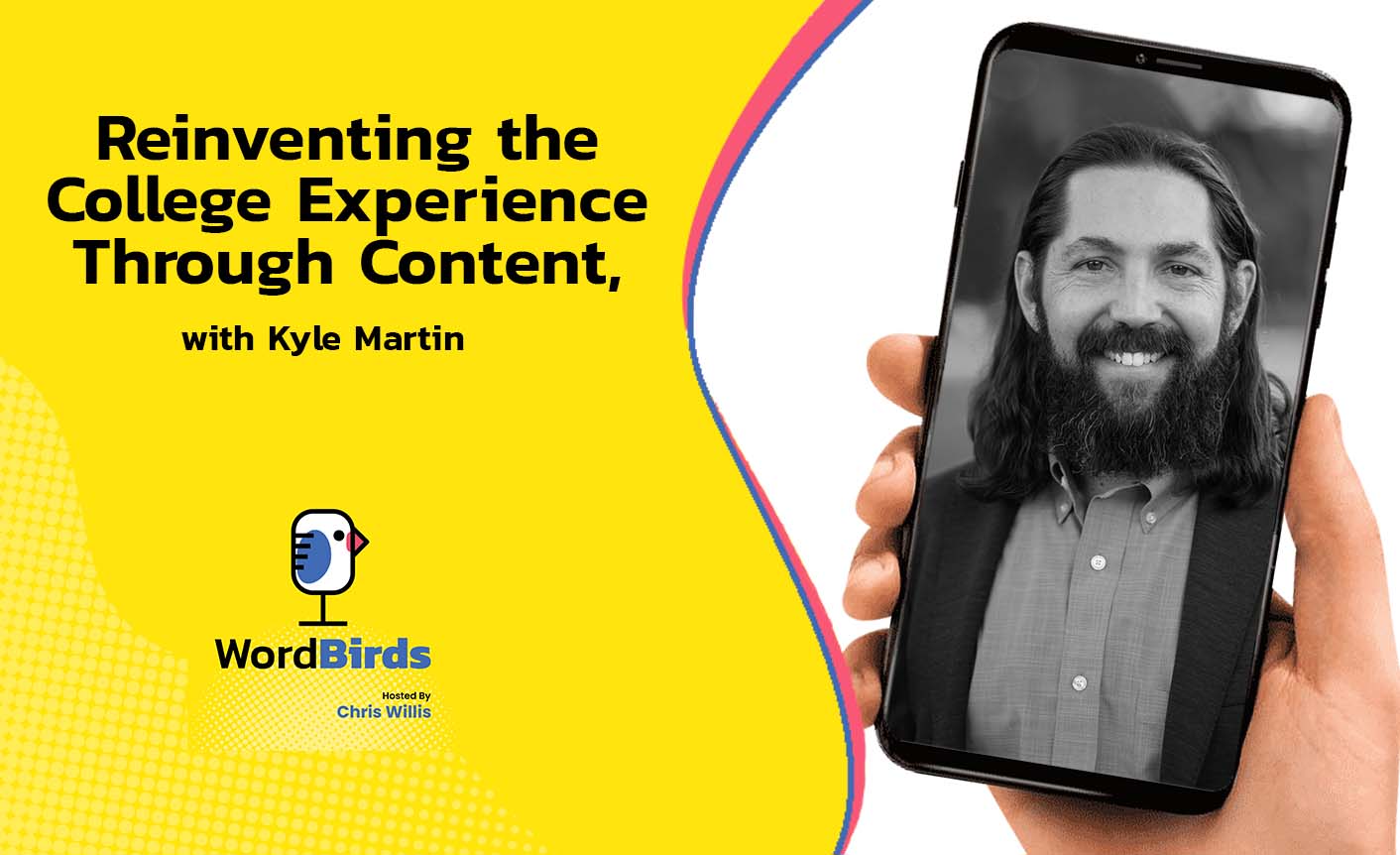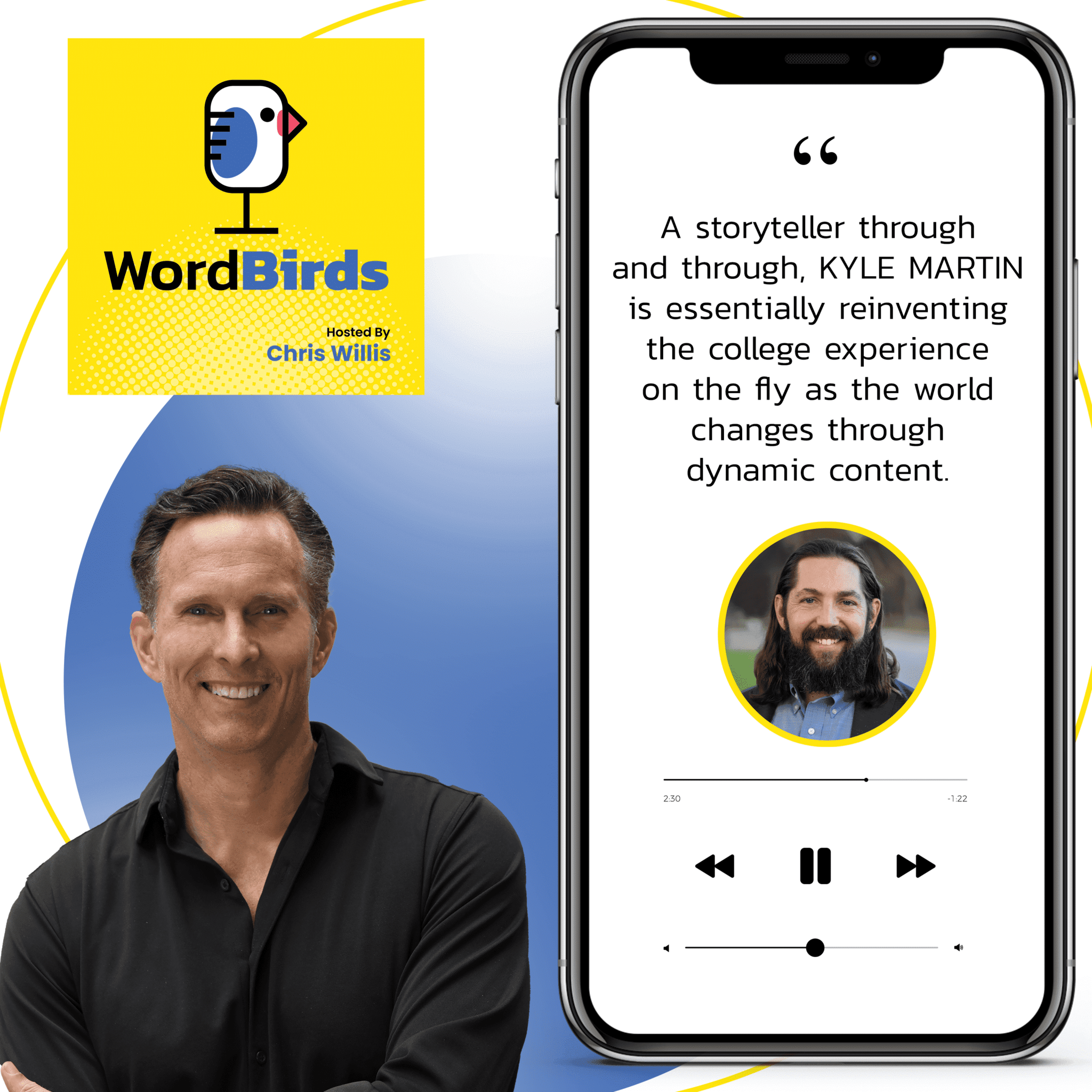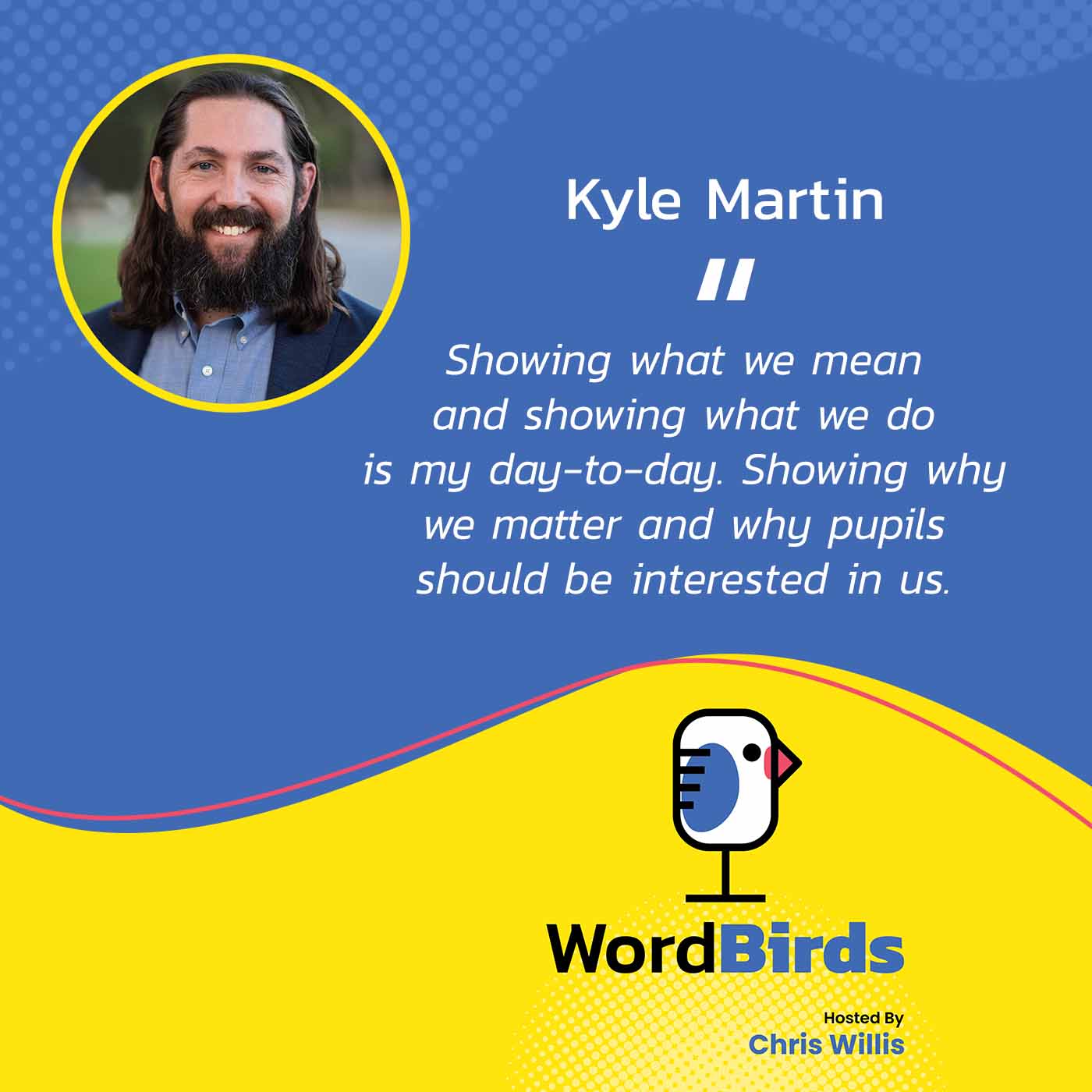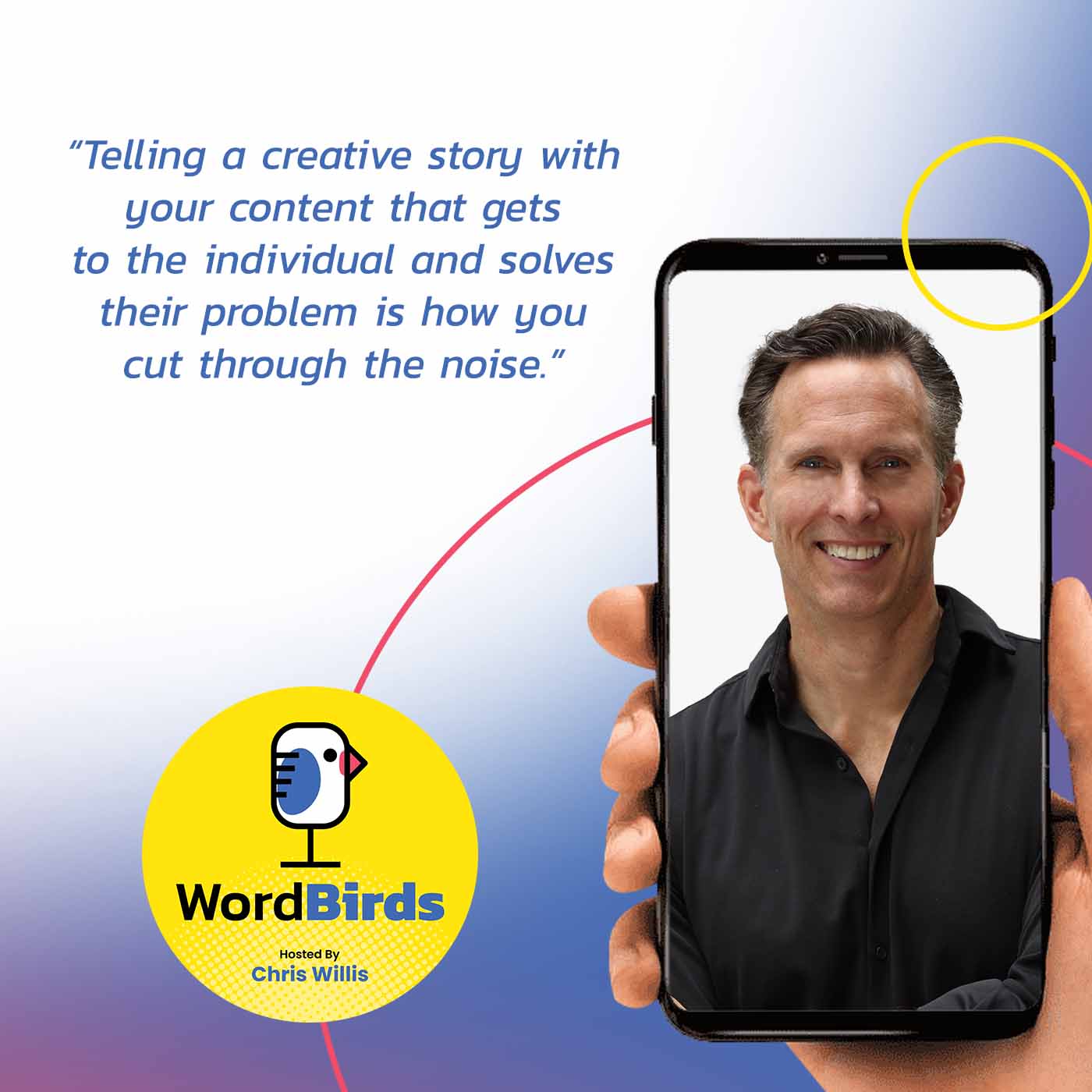
We are in a data-driven world where every imaginable type of content bombards and informs us. The challenge now is to navigate through the noise, producing content that people would want to see.
For this episode’s guest, it’s storytelling that can differentiate you and your content. Kyle Martin, the Director of Content Development at the University of Central Florida, sits down opposite Chris Willis to share with us how he has done this while reinventing the college experience. He also takes us across his career journey, from working with nonprofit content to eventually landing his role at the University of Central Florida.
Find out how he rises above the competition and creates content that connects with his audience. Follow along to this insightful conversation to learn more!
Watch the episode here
Listen to the podcast here
Read full episode transcript
On the show, Kyle Martin, Director of Content Development at the University of Central Florida. We’re going to talk about how wanting to write and wanting to tell stories builds a storyteller from a career standpoint and how it’s not just about creating a lot of content. It’s about creating the right content to get to the end results for the audience. In this case, largely nonprofit content trying to help people and impact their lives. Let’s sit back and get some insight from the flock.
Kyle Martin, welcome to the show.
Thanks for having me.
I’m thrilled to have you here. I want to talk about how you’re in a Director of Content Development role at the University of Central Florida. How did you progress to this? How did you get here?
It starts with being a writer and always being the kid on a school bus that was reading books. I was talking. My daughter takes after me in a lot of ways. She’s always got her nose in a book. I think starting out with a love of writing and a love of storytelling is where everything began from there. I moved on to high school and tried to figure out what I wanted to do with my life and realized it would be pretty cool if people would pay me to write. If that’s something I enjoy to do might as well get paid for it.
I had grandiose plans of working for National Geographic. It was my goal to go to college. I went to Mississippi College and went into the journalism program there to become a newspaper reporter. Graduated from there, like all of us, we have ideas and plans, and then we get in the job, and we are like, “I had no idea what I was doing,” but I loved every minute of it. I was a reporter for years. I worked at three different newspapers and enjoyed it.
There are two sides to newspaper reporters. There’s the reporting and the writing side. Reporters tend to be strong on one or the other. You can be good at both but you are better at one or the other. I have always been a better writer. I was a reporter for eight years and got to the point where I was delivering pizzas on the weekends to make ends meet for a growing family at that point. I loved the job but I needed something more stable and with a little bit more of a future to it.

I moved into marketing. Nonprofit marketing has always been much more attractive to me than for-profit or something where you are selling widgets or trying to market widgets. The storytelling aspect of it was important. I went into marketing with no clue how to do marketing. It was the storytelling aspect of it. I started at the Wounded Warrior Project in Jacksonville.
When I left my last newspaper, I was working with post-9/11 veterans. Working with veterans and telling their stories, I could see the power that storytelling had to influence decisions. Even from a crime standpoint, when I was a public safety reporter. You look at, for instance, crime statistics, and you can write a story about crime statistics but it doesn’t tell you what that means, a 50% increase in burglaries.
If you go and knock on doors and tell the story of someone that’s living in fear, that they have their door bar, bought a dog because they are scared of it, suddenly that comes to life. That was what appealed to me was the aspect of storytelling. Nonprofit marketing was able to provide that to me as well. Wounded Warrior Project, I was managing publications there.
I was doing a lot of video work, telling stories and helping everyone from Congress. We put out a policy report to even brands like Brawny, Heinz, and Campbell’s. When you were going into the restaurant, you saw the Heinz bottle with the Wounded Warrior Project logo on it. Those were the type of campaigns that I was working on.
In all those respects, it was working and managing the team of veterans that volunteered your stories and finding the salient details and the stories that would connect with people and help people understand. I went from the Wounded Warrior Project to Florida Polytechnic University. I moved to Orlando. My wife is in Orlando. We love Central Florida and did a lot of the same things there.
This time, Florida Poly was a brand new university. They were literally built from the ground up. They were there for three years when I started. A lot of the same types of things. You don’t know what Florida Poly is. They don’t know what they do or why they exist. We didn’t even have a graduating class at that point. It was still brand new. It’s fun when you start something completely brand-new. It can be frustrating in some respects because you don’t have any rules and guidelines. You don’t have things that are established.
When you start something completely brand-new, it can be frustrating in some respects because you don't have any rules and guidelines, but it’s also fun because it’s a brand-new opportunity to do whatever you want to do. Share on XIt’s also a brand new opportunity to do whatever you want to do to define what our brand looks like and what we do. I was involved in the rebranding campaign when they unveiled a new logo, a new website and all these types of things. Along that way, we were talking about stories the whole time, talking with alumni, with students, with donors and everybody that formed the fabric of Florida Poly and defined that brand and identity.
From there, I went to a small nonprofit at Healthy West Orange in Central Florida. Again, going back to storytelling, they were small. When we were talking about small offices, I was in a converted bathroom. Every time there was a flush in the wall, you would hear it. It’s super small. They packed me in there, and it was a great time. It goes back to people who know they want to be healthy but they don’t know how to be healthy. You can preach, “You shouldn’t eat hamburgers or French fries all the time,” but that doesn’t make it exciting.
People know that and it’s hard to make people healthy too. You have to give up hamburgers. Telling stories and making dynamic content that’s exciting, that has people that look like you, that tell your story are the types of things that connect with people and help influence behavior. That landed me at the University of Central Florida. It was a great opportunity where one of the biggest universities in the US. I work specifically on the College of Sciences Marketing Team.
Being such a huge university, there’s a central marketing team. Each of the colleges, there are thirteen colleges, has its own marketing team to tell the brand story. What’s the college about? What do we do? Why do we matter? Taking all those different stories. We are doing alumni and student stories and research and faculty stories.
We’re directed in part by top leadership. It’s top-down. This is what we want to do. We want to be a top research university in the US but then go down to the Dean level, “What are our Dean’s priorities? How does she want to position her college and find the messages to go with that?” More than just the messages, how can we show that? That’s the old writing adage, show, don’t tell. Showing what we mean and showing what we do in my day-to-day. Showing why we matter and why pupils should be interested in us.

Provocative statement of the day when you’re doing that, when you are building out that new brand at a place like Central Florida, the more content, the better. Build as much content as you can.
That’s your provocative statement, and that’s a resounding no, partly. For purely practical purposes, having the resources and time to do bazillions of things is not feasible. You wind up diluting your message and diluting your resources and running yourself ragged, trying to chase everything down. More importantly, we have so much content, to begin with. They are bombarded all day long by content. “Why should I listen to this? Why should I pay attention to whatever you’re saying?”
We can’t reach everybody all the time. That would be great but that’s not feasible. You start to look at what you’re trying to say, what matters the most and pick two or three things and then tailor the content to that. You’re much more intentional. It’s personally more rewarding because you don’t feel so stretched out. You feel like you have a vision, and you have something that you’re trying to work towards. Being intentional with content gives you purpose and direction as a team. It helps your team feel like they are going towards a finished goal but it also gives your consumer a more nuanced, relevant, and useful piece of content too.
Being intentional with content gives you purpose and direction as a team. Share on XHow are you defining what matters most? How are you setting your agenda?
We start with set objectives. These are where we want to see ourselves in a year and then work backward from there. “If we want to do this, how are we going to show this? How are we going to do this?” I will give you, for instance, a show it, not tell. We’re working on setting up a new project called the Expert Initiative. The University of Central Florida is a research university. We were founded to supply a talent pipeline to Cape Canaveral close by.
We’re about an hour from Cape Canaveral. We were set up at the beginning to do that, to bring all the engineers and the physicists to NASA, and we’ve expanded greatly since then. The College of Sciences expands everything from sociology to chemistry to mathematics where a lot of different disciplines, which, again, makes it hard sometimes to decide how we’re going to bring all these different disciplines and some that are vastly different.
The difference between the school of media, physics, and math, we have nice creative, digital video game type of program versus hard numbers. You have to find and define that overarching message. “What matters the most? What’s the commonality between these things?” What I said alone was that we were experts. We’re experts in what we do. When you need a media expert, this is where you should come. It’s the College of Sciences.
When you are a high school senior and you are trying to find the right university for your program, the College of Sciences is where experts are, and that’s a commonality. You define experts. I feel like if you have a PhD and you are teaching at a major university, you are already an expert. We have people that are quoted in Fortune Magazine. We have people that are quoted in New Yorker. We have a high-ranking faculty as well.
It’s defining an expert and deciding, “How are we going to fit everything through that lens? How are we going to define everybody as an expert? What does an expert mean?” That’s the process of doing that but it’s finding an overarching umbrella and finding one commonality, one theme, and then building on that from there.
Once you find that, what’s cutting through the noise? There’s so much content out in the world, and there’s much competition for what you do. How do you cut through and differentiate?
Visual is super important. Seeing a face is already giving you more than you need. Video and photography, those types of things are not unique in the content sphere but seeing somebody’s eyes makes a difference already and then finding unique aspects of it. Once you decide, “We are going to be experts.” How are we, experts? How are we different from the University of Florida, the University of South Florida, or any other university and finding the experts that can speak to things that are unique, things that are cool?
We have the advantage of things like having the sea turtle program and the Marine Turtle Research Group. Everybody gets sea turtles but then you start digging into things like statistics, which is a pretty niche field. If you find out cool things like Snapchat filters, they are built-in AI and deep-fake videos. They are all based on statistics. Suddenly, you’re speaking in a language that everybody understands. You’re speaking in a cool language. You’re speaking about things that people can relate to.
How you cut through the noise is to find what the average person can understand. How this affects your everyday life? How if you didn’t have this research, your phone wouldn’t work, your car wouldn’t work, or you wouldn’t be able to stream videos at night? That’s what math is doing. They’re working on sending all of the ethernets that make streaming services possible. It happens because of people in the math department. Helping people understand how their life would be different with or without this research helps cut through that noise and make it more relatable.
In my world, it’s finding the value that people care about, selling B2B software. If I latch onto a benefit that nobody gets compensated for, I can help you reduce the time it takes to get through your editorial process. Nobody asked me to do that. I would love to do it but nobody asked me to do it. Rather, you find that thing that people are. “We can help you create more revenue from your content.” Everybody cares about that. More conversion points. Everybody cares about that. More leads as a result of it. Everybody cares about that.
That’s where you differentiate. It’s super fun to make things up and tell that super creative story that resonates with us at the time. Finding that nugget that gets you through to the individual and says, “This is a problem that you have, and this is how you solve it,” that’s how you cut through. Looking at you and where you are, you are a storyteller through and through, to the point where it’s part of your link on your LinkedIn page. In your current role, you’ve ascended to management. You are the Director of your group. What’s different about that take on responsibility across a wider swath of your business than getting to tell the story?

It’s challenging in some respects. I would rather spend six hours editing a video. That’s what I enjoy doing. Writing, editing, and doing all the creative stuff that’s what get me jazzed up. That’s what I enjoy. That’s what I come to work to do. That’s when my brain starts firing. Taking on a director-type of role, suddenly, you’re doing HR decisions. You’re looking at budgets and doing the things that make creative people’s skin crawl. That’s like, “I got to sit at a table, and I have to sit in a meeting for two hours. I would rather doodle, look out the window, and think about things.” That’s where my introverted space is daydreaming. I get to do that on my drive. There’s that conflict, that nature versus the job that I’m doing.
The cool aspect is that you get to set the strategy too and say, “This is where we are going to go.” When you have the right people in place, and you have people that you trust, they are creative types too. You can say, “We want to achieve this. How would you do that?” Seeing people’s eyes light up and seeing them come back to you with ideas is rewarding too. You can have that bouncing-off conversation and see what they enjoy doing. “I don’t know everything. I don’t have the best creative vision all the time.”
There are things that people come up with that I’ve never even thought about. That makes us such a better, richer workplace. That’s the rewarding aspect from a director management type of standpoint, saying, “These are some of my ideas. These are the framework that we have to work in.” I set the framework and say, “We are trying to achieve this, and we need to do X, Y and Z number of videos but you have the free reign to tell me how you want to do those videos. How can we fit this messaging? What am I not thinking? What am I missing?” You can still have those creative conversations. You’re almost more the conductor on the train and you have all of your people behind you leading the train.
Whether it’s something you’re leading or doing over the next six to 12 months, what’s the number one initiative for you? How are you going to know if it’s successful?
We’re going to continue to work on our expert initiative. The next step is flushing out those stories. We have eight departments and two schools. We have a lot of people to reach out to, pin down, and get those story leads going. We’re going to start flushing out our content from there and looking at and maximizing each piece of content that we do. Each interview is not just one story. Each interview is a social media piece of content.
It might be a short video. It might be a feature on the website. It might be a physically hard poster that we put up. That’s how we are going to be working on strategy. How are we going to maximize these pieces of content? The metric side of it wars with my creative side of it too, and sitting down and looking at the hard numbers but we are going to be looking at website visits to see how many people are coming back to that.
Looking back at our social media metrics to see how those posts are performing, to see what doesn’t perform well, what lands flat, and where we can improve. This is stage one, to see this is something that has never been done before, which is fun too. We’ll see how this works. Six months is a great window. Let’s see how far we can get with this. Let’s see what lands and revise it and see what we could do better.
The first step is to look at social media, see the engagement, and the end goal so that if that’s a six-month goal, the 12-month goal must be registrations like it has to lead to something.
That’s the challenge of what we do. We don’t have a traditional marketing model. We’re not selling widgets and trying to influence behavior in the traditional marketing sense of the way. That’s where I have been thinking critically about what we do and why we do that. Going back to why we create content, what are we trying to achieve? Some of our metrics and some of our goals are to create a more comprehensive student experience. We’ve never focused on students as much and what they do. We can help create a better student experience so that students feel like they are part of a bigger community.
The college experience dramatically changed after the pandemic, and everything went remote. Even with students coming back to campus, the experience is still not the same. There were still quite a number of digital online classes before the pandemic but it changed the way people approach classes and learning. In the process, it opened a lot of benefits but it also lost a lot of that college experience where you go to parties, hang out with people, go to class, and sit next to people.
That’s how I met my wife, sitting in the back of a communications class. You miss out on a lot of that, and you lose that personal touch and experience. What we’re trying to build back again is to show that if you are a Chemistry major, there are other Chemistry students. There are alumni that have gone on to build creative, great jobs that you can strive for. There are seniors that have experienced tough experiences, and they are here to help you.
There are great jobs and industry partners that we are working with. That’s going to be our metrics. It will probably be some surveys. It will be looking at our metrics and what’s performed, working with the individual departments and their social media to see how our content has helped. Even serving in a consultant role and seeing how those individual departments can improve their marketing presence as well.
It sounds like you’ve got a lot out in front of you. You’re essentially reinventing the college experience on the fly as the world changes, which isn’t either a very enviable task or possibly unenviable. Depending on who you are talking to and where it sits. For people that are interested in continuing this conversation, how would the audience get in touch with you?
I’m on LinkedIn. You can find me pretty quickly, @KyleMartin, the College of Sciences at UCF.
Kyle Martin, thanks for being on the show. I had a great time talking to you and look forward to talking to you again in the future.
Thanks for having me.
Important Links
- University of Central Florida
- Marine Turtle Research Group
- @KyleMartin – LinkedIn
- WordBirds – LinkedIn
- WordBirds – Home page
About Kyle Martin

Kyle Martin began his content journey in the newsroom, primarily covering public safety for three different newspapers. Critical skills like editing, writing and storytelling followed him into the nonprofit sector, where he managed publications and video production. Today, he manages the content direction for the largest college at the University of Central Florida.
Are you ready to create more content faster?
Schedule a demo to see how content governance and AI guardrails will drastically improve content quality, compliance, and efficiency.
The Acrolinx Team




